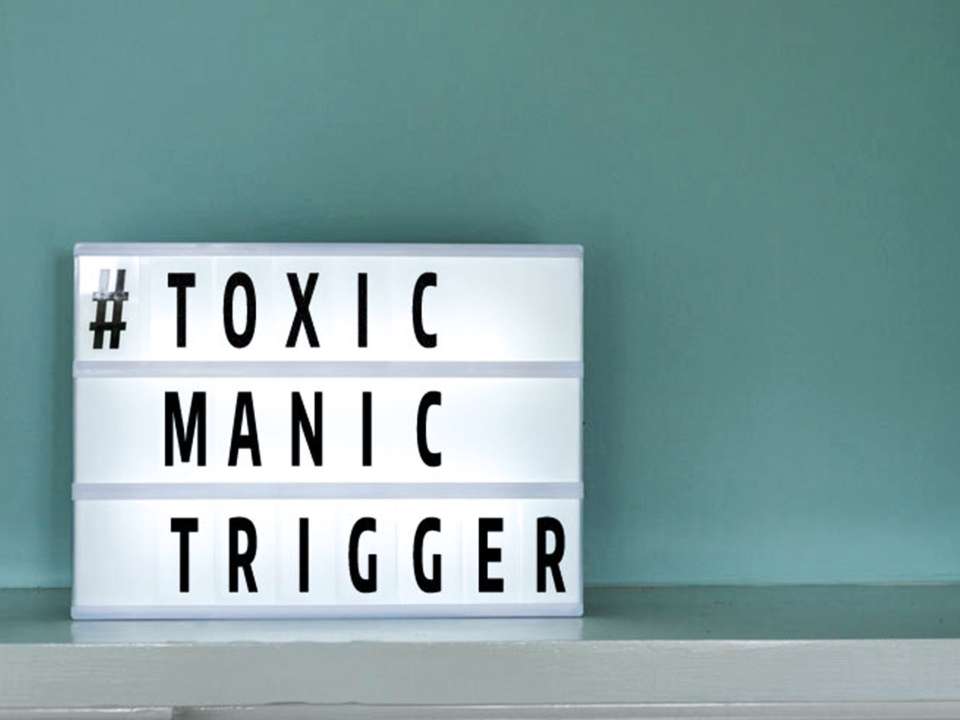
From “think positive” to “no bad days,” the internet is full of uplifting quotes and phrases that are meant to inspire positivity in a helpful way.
These words might be comforting, but they also highlight an aspect of U.S. culture that can be more harmful than helpful: toxic positivity.
Toxic positivity is shallow. It’s a false reassurance, like someone saying “everything happens for a reason” after your grandmother dies or “everything will work out” after you lose your job and apartment and are forced to relocate.
Here’s what you need to know about the difference between true positivity and toxic positivity, how to avoid perpetuating the latter and what to say to someone who insists on doing so.
What is toxic positivity?
First, it’s helpful to understand what toxic positivity is, exactly — because, despite what cynics may say, not all positivity is bad.
According to Tabitha Kirkland, a psychologist and associate teaching professor at the University of Washington’s Department of Psychology, it’s important to recognize that positivity is two different but related things: Our internal emotions and the emotions we project to others.
“Toxic positivity is a way of responding to your own or someone else’s suffering that comes across as a lack of empathy. It dismisses emotions instead of affirming them and could come from a place of discomfort,” she explains.
Toxic positivity usually isn’t intended to cause harm. Often, it happens in situations when we want to help but don’t know what to say, for example, if a friend reveals they received a difficult diagnosis.
How toxic positivity affects your relationships
Not many of us know how to talk about sad or uncomfortable topics, and in our attempts, we may mess up.
While messing up sometimes is normal and human, it’s important to pay attention to how you respond to someone’s attempts to confide in you.
“With toxic positivity, we want to make someone feel better, but it doesn’t typically have the desired effect; it shuts the other person up,” says Kirkland.
For example, and going back to the difficult diagnosis scenario, maybe your friend is telling you how scared and uncertain they are about the future. This is hard to hear, so instead of listening, you try to reassure them that everything will be OK.
It can also misrepresent you to others, making you seem hard to connect with or even a bit fake.
If you have children, toxic positivity can impact your relationship with them, too.
“With children, our impulse may be to tell them, ‘You’re OK’ or ‘It’s not a big deal’ or ‘Stop crying, everything is fine.’ This teaches them that their negative feelings aren’t OK and can be influential on how they develop and process their concepts about emotion, and how they learn to express or not express their own emotions,” Kirkland explains.
Kirkland also notes that emotion is gendered: Boys aren’t encouraged to express emotions except those that reflect power, such as anger, whereas girls are encouraged to express their emotions but only ones that are seen as less powerful, such as agreeableness.
These gendered differences in emotion socialization can lead men to suppress their emotions and can lead women to feel pressured to show positive feelings that may be inauthentic.
How toxic positivity affects you
Sometimes, forcing positivity may not be in response to someone else’s misfortune but our own.
It’s normal and understandable to not want to deal with your negative emotions sometimes. But if you’re regularly forcing a positive outlook on yourself when your feelings are the opposite, it can take a toll on your mental health.
“Some research suggests that people who avoid their own negative emotions just feel worse later on,” Kirkland says.
Basically, if you keep ghosting your own emotions, they’ll keep coming back to haunt you until you finally deal with them.
Alternatives to toxic positivity
Kirkland regularly teaches a happiness psychology class for undergraduates, and what she has learned from the experience is that true positivity is about more than just internal emotions — it’s affected by our relationship with ourselves and others, as well as our relationship to our community and the world around us.
True happiness doesn’t come from suppressing negative emotions and touting feel-good statements, Kirkland says, but rather leaning into what we’re authentically feeling in the moment and accepting all of our emotions, both positive and negative.
“Some people think being happy or being a happy person means you don’t feel bad, but that’s silly: We all have a full emotional life. There’s more to happiness than feeling good all the time,” Kirkland says.
Here are some ways to cultivate true positivity in your life — and nix the toxic positivity for good.
Practice mindfulness
Being mindful and in-the-moment is the first step toward living a full emotional life, Kirkland says.
Give mindfulness a try by simply taking a quiet moment to notice how you’re feeling and what’s going on in your body and mind. Don’t focus on any single thought or sensation; instead, notice everything.
If you notice any negativity, don’t judge yourself for it — just make a note of it and move on. It’s important to notice our negative feelings and acknowledge the information they are giving us without losing ourselves in them.
It can be helpful to start learning how to be mindful when you’re calm, Kirkland recommends, especially if you’re new to it. That way, when you’re in a more emotional state, you will already have the skills needed to work through it.
Recognize that emotions are tools
One approach to mindfulness is to look at emotions as tools or information, rather than focusing only on how they make you feel.
“All emotions are functional and have a purpose. They are a signal to the person experiencing them or the person being communicated to,” Kirkland explains.
Negative emotions like anger or fear serve to alert us about potential danger or threat, whereas positive emotions like happiness foster connection and opportunities to be creative.
Admit your interpersonal mistakes
Whether in the moment or after the fact, if you realize you dismissed a loved one’s negative emotions or cut them off with toxic positivity when they were trying to confide in you, own up to the mistake and apologize.
We all make mistakes, so try not to get down on yourself if you notice that something you said sounded insensitive or dismissive. The best thing you can do it recognize that and ask your loved one how you can better respond next time.
Clarify your needs
Sometimes, people may respond to our expression of emotion in a way that isn’t helpful, not because they don’t want to help but because they make assumptions about how they should respond, such as offering advice when advice isn’t wanted.
One way to avoid this is to start the conversation by being clear about your needs — for example, that you’re looking for empathy rather than advice.
“Clarify your purpose by reinstating your intention for conversation,” Kirkland recommends.
Stating what you want from the interaction can help the other person, too, by encouraging them to relax and respond more authentically.
With close friends or family, it’s OK to discuss how their words aren’t helpful, if you’re comfortable having that conversation. If the person is someone you want to be able to confide in and want to have an authentic relationship with, being honest will only strengthen your bond ultimately, even if it makes things uncomfortable in the moment.
If you’re talking with a co-worker or acquaintance, however, and aren’t as invested in the relationship, you may not want to engage with their toxic positivity at all. In this case, it’s OK to politely excuse yourself from the conversation.
If you have kids, teach them how to express all emotions
Modeling expressing a full range of emotions — and talking openly about them — is important when around kids to help ensure they grow up learning how to deal with their own feelings, rather than avoiding them.
Inevitably, the young people in your life will at some point express their anger, sadness or frustration. When they do, avoid simply telling them to stop crying or yelling. Instead, talk with them about how they’re feeling and why they might be feeling that way, and what you both can do to resolve the issue.
Be open about your own feelings with them, too. If, say, you’re frustrated about something and lose your patience and snap at your kid, make sure after you’ve cooled off to explain that you lost your temper and you’re sorry for it.
Let yourself feel your feelings
This is straightforward, though it’s often harder to accomplish than it seems. We often have excuses for not engaging with our complicated emotions: We’re too busy to deal with them, we don’t want to be distressed, we don’t want to upset others.
Remember, though, your negative feelings won’t go away unless you eventually deal with them. So acknowledge them, try to understand where they might be coming from, and think about what you can do to address them.
It’s important not to prioritize more positive emotions over negative ones, Kirkland says. All emotions offer you useful information about how you are doing in the world, and all are equally valid.
“When you have the sweet, it’s a contrast to the sour, and you can really appreciate it,” says Kirkland.

 Healthy ideas for your inbox
Healthy ideas for your inbox





